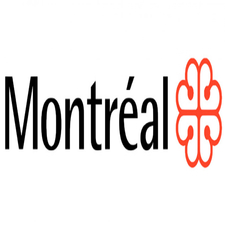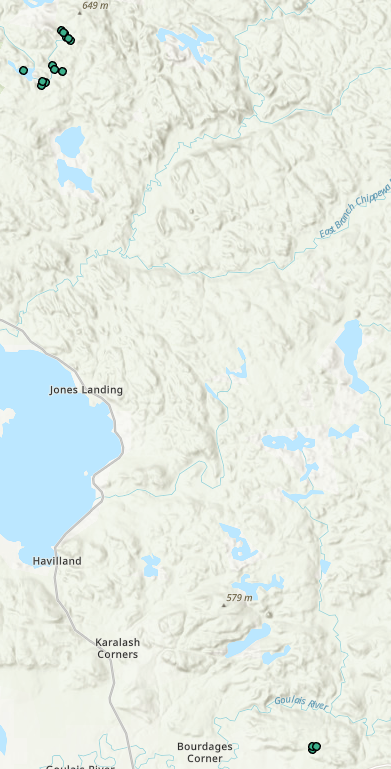Water quality
Type of resources
Available actions
Topics
Keywords
Contact for the resource
Provided by
Years
Formats
Representation types
Update frequencies
status
Service types
-
Short and long term drinking water advisories that are in place in First Nation communities on reserve located in Canada. Drinking water advisories are preventive measures put in place to protect public health from drinking water that could be contaminated. In a First Nation community, a drinking water advisory can affect as little as one building and does not always represent a community-wide drinking water problem. Drinking water advisories are put in place for various reasons. For instance, a community may issue an advisory if there are problems in the overall water system, such as line breaks, equipment failure, or poor filtration/disinfection during water treatment. Communities may also choose to issue a drinking water advisory as a precautionary measure, such as when there are emergency repairs in the water distribution system or if a community does not have a trained Water System Operator or Community-based Drinking Water Quality Monitor in place.
-

RUISSO program sampling points, stream water quality, Aquatic environment monitoring network.**This third party metadata element was translated using an automated translation tool (Amazon Translate).**
-

SAMPLING POINTS FOR THE QUALO program, shoreline water quality of the aquatic environment monitoring network.**This third party metadata element was translated using an automated translation tool (Amazon Translate).**
-

PURPOSE: Chlorophyll a is a photosynthetic pigment common to aquatic algae, and its measurement can provide an estimate of free-floating algae abundance in an aquatic system. For more than 40 years, the Fisheries and Oceans Canada - Great Lakes Laboratory for Fisheries and Aquatic Sciences (DFO-GLLFAS) office in Sault Ste. Marie Ontario has collected water samples for chlorophyll a spectrophotometric analysis, producing data in the form of mg/m3. The collection of chlorophyll a data was generally conducted to assist in characterizing the aquatic systems level of primary productivity, since that can influence fish abundance. This was a supplementary measure of the quality of fish habitat in these systems for a variety of fish-related projects of relevance to DFO’s mandate. Consistency of data collection was dependent on the duration of each project and funding available. DESCRIPTION: The initial study collected chlorophyll a data from the five lakes in the Turkey Lakes Watershed (TLW – Upper and Lower Batchawana Lakes, Wishart Lake, Little Turkey Lake and Turkey Lake) as well as Quinn Lake which is located outside of the TLW (see Smokorowski et al. 2006) in partnership with Environment and Climate Change Canada (ECCC) and Natural Resources Canada (NRCAN), as part of Canada’s Acid Rain Initiative. The TLW study was established in 1979 to evaluate the impacts of acid rain on terrestrial and aquatic ecosystems. This dataset encompasses chlorophyll a data collected from five lakes in the TLW and Quinn Lake (data also collected by the Canadian Wildlife Service and Environment and Climate Change Canada) from 1983 - 2010 with some gaps of varying duration (Webster et al., 2021). Note that an experimental habitat removal took place in some TLW lakes and Quinn Lake in 1999 and 2000. Specifically, in autumn of 1999, 50% of the coarse woody material was removed from the shorelines of Little Turkey Lake and Quinn Lake, and in autumn of 2000, 50% of the course woody material was removed from Wishart Lake shoreline (details available in Smokorowski et al., 2006). Methods Summary: Sampling was only conducted during the open water season and the frequency and extent of sampling frequency in each waterbody varied and was project- and funding-dependent. There are no chlorophyll a data for the years 1986, 1989 – 1990, 1996 – 1997, 2006-2007 and 2009. Sampling was accomplished by rinsing on site an appropriately-cleaned 1 L, brown-opaque polyethylene bottles at least three times. For hand draw samples, the bottle was immersed sub-surface (less than 0.5 meters) to collect the sample. Composite tube samples were collected using an integrated water sampling tube that collected epilimnion water from the entire water column to a depth of 5 meters. Up to five - 1 L (1000 mL) samples were collected per station and returned to the lab on ice. Each 1 L sample was filtered using glass fiber filters (Whatman GF/C, 42.5 mm) within one day of sampling, and then frozen prior to standard chlorophyll a analysis (American Public Health Association [APHA] 1985). From 1983-1998, Chlorophyll a concentrations (mg/L) was calculated based on APHA 1985; from 1998 to present the calculation was based on APHA (1998). The sample dataset information includes the georeferenced sampling locations, the raw data for chlorophyll a calculations, and the calculated chlorophyll a concentrations using both the APHA (1985) and APHA (1998) methods. This dataset was published in partnership with the Canadian Institute of Ecology and Evolution - Living Data Project, which was funded by a CREATE grant from the Natural Science and Engineering Research Council of Canada. We would like to recognize Caroline Dallstream for her effort in publishing this dataset. SAMPLING METHODS: Methods Summary: Sampling was only conducted during the open water season and the frequency and extent of sampling frequency in each waterbody varied and was project- and funding-dependent. There are no chlorophyll a data for the years 1986, 1989 – 1990, 1996 – 1997, 2006-2007 and 2009. See Sampling was accomplished by rinsing on site an appropriately-cleaned 1 L, brown-opaque polyethylene bottles at least three times. For hand draw samples, the bottle was immersed sub-surface (less than 0.5 meters) to collect the sample. Composite tube samples were collected using an integrated water sampling tube that collected epilimnion water from the entire water column to a depth of 5 meters. Up to five - 1 L (1000 mL) samples were collected per station and returned to the lab on ice. Each 1 L sample was filtered using glass fiber filters (Whatman GF/C, 42.5 mm) within one day of sampling, and then frozen prior to standard chlorophyll a analysis (American Public Health Association [APHA] 1985). From 1983-1998, Chlorophyll a concentrations (mg/L) was calculated based on APHA 1985; from 1998 to present the calculation was based on APHA (1998). The sample dataset information includes the georeferenced sampling locations, the raw data for chlorophyll a calculations, and the calculated chlorophyll a concentrations using both the APHA (1985) and APHA (1998) methods. USE LIMITATION: To ensure scientific integrity and appropriate use of the data, we would encourage you to contact the data custodian.
-

Data from the RUISSO program, bacteriological and physicochemical quality of streams and inland water bodies in the Montreal agglomeration, from the Aquatic Environment Monitoring Network. An [interactive map] (https://experience.arcgis.com/experience/38d7c7bb43da4e2082aa836689d0d318/) is also available.**This third party metadata element was translated using an automated translation tool (Amazon Translate).**
-

History of annual reviews of the quality of water bodies in Montreal. The aquatic environment monitoring network (RSMA) takes surface water samples in order to draw up a state of the situation in the Montreal agglomeration.**This third party metadata element was translated using an automated translation tool (Amazon Translate).**
-

COURDO SPÉCIAL program sampling points, watercourse quality, Aquatic environment monitoring network.**This third party metadata element was translated using an automated translation tool (Amazon Translate).**
-
This product provides the median of monthly maximum turbidity values (in nephelometric turbidity units) for drinking water facilities by drainage region. Turbidity refers to the relative cloudiness of water, caused by suspended particles in water. The Survey of Drinking Water Plants collected this monthly maximum turbidity data for surface water sources from facilities reporting turbidity data for at least 10 months in 2013. These facilities served 24 million people and produced 4,091 million cubic metres of potable water from surface water sources in 2013. Source water turbidity was monitored continuously at 42% of these drinking water plants in 2013, daily at 34% of plants and less frequently at the remaining plants.
-

Data relating to the quality of water in the St. Lawrence River resulting from the special program planned and carried out by the Aquatic Environment Monitoring Network as part of the work that required the closure of the south-east interceptor in November 2015.**This third party metadata element was translated using an automated translation tool (Amazon Translate).**
-
This dataset includes water chemistry data collected from five of the six lakes as part of the Northwestern Ontario Size Series project in 1987 and 1990 including species of nitrogen and phosphorus, carbon, chlorophyll a, conductivity, soluble reactive silica, chloride, sulphate, conductivity, sodium, potassium, magnesium, calcium, pH, alkalinity and organic acids
 Arctic SDI catalogue
Arctic SDI catalogue